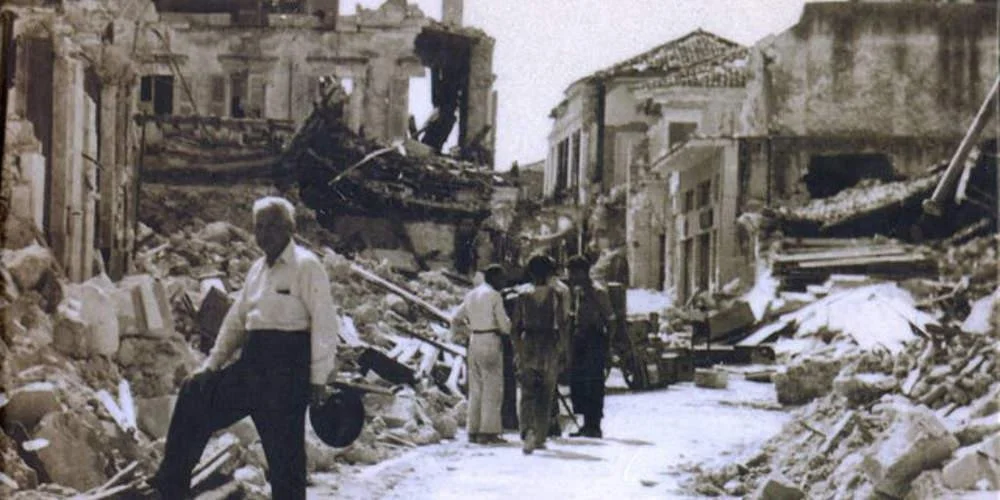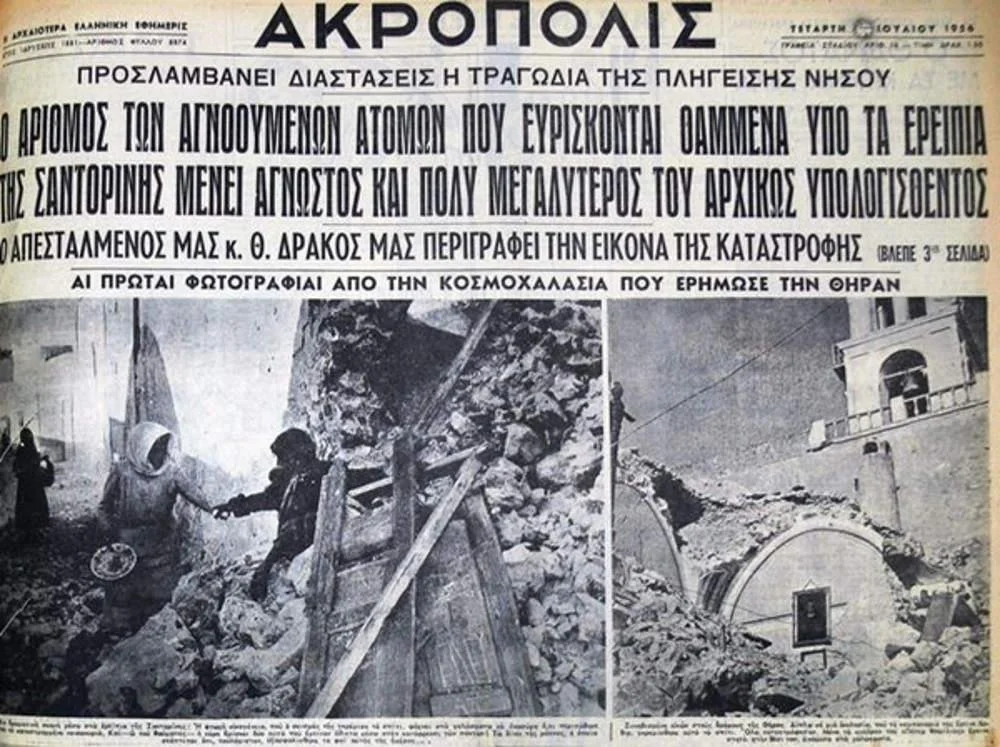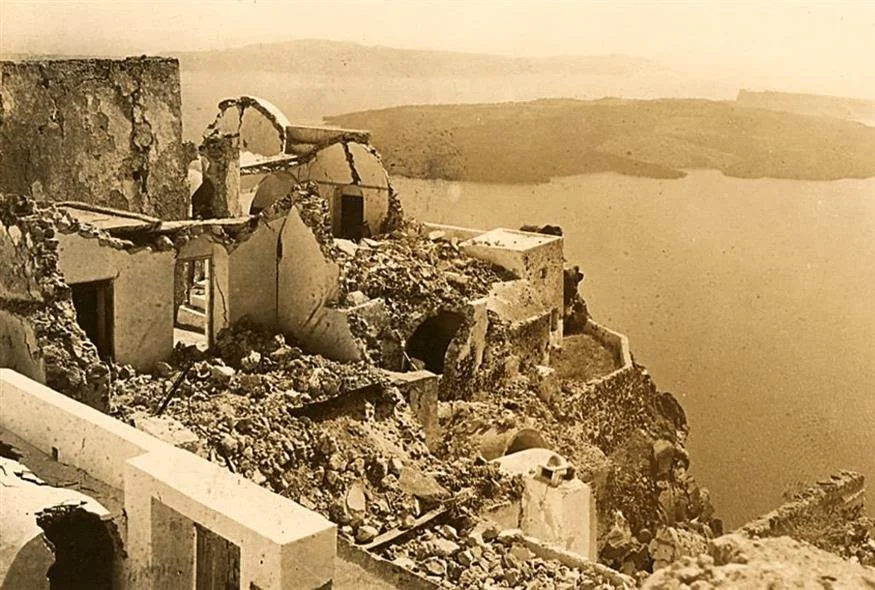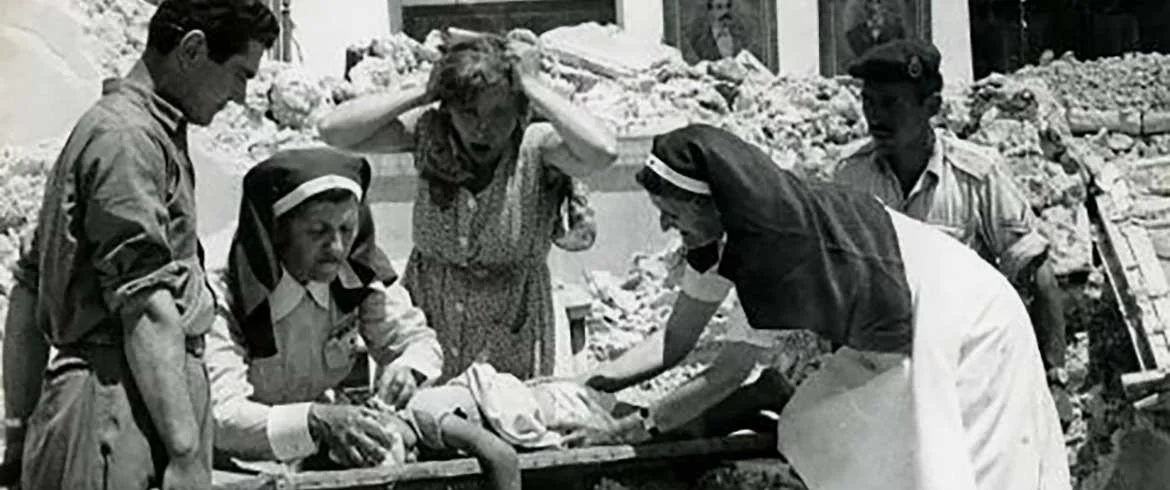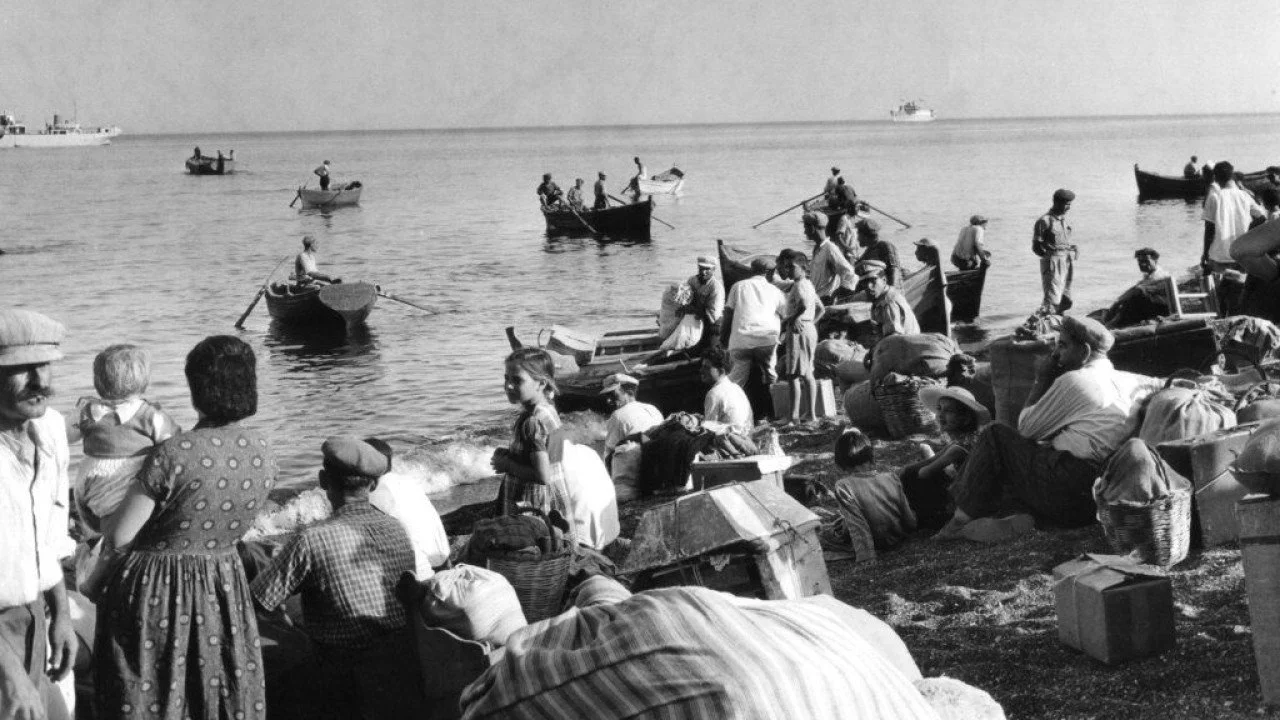On this day in 1956: The devastating 7.3-magnitude earthquake in Santorini
One of the most destructive earthquakes in European history and the strongest recorded in the region during the 20th century struck the island of Santorini.
The Timeline of the Disaster
In the early hours of July 9, 1956, a deadly earthquake shook the island. The disaster was further intensified by a 25-meter-high tsunami, which caused widespread destruction.
The first warning came on the afternoon of July 8, when a 4.9-magnitude earthquake hit the sea south of Amorgos. However, residents of the Cyclades were largely unfazed and went about their daily routines.
The following day, at 5:11 AM on July 9, the main earthquake struck unexpectedly, bringing catastrophic consequences.
According to measurements, the earthquake registered 7.5 on the Richter scale and 9 on the Mercalli intensity scale. Contemporary reports described the tremor as equivalent to the explosion of 10,000 atomic bombs.
On that tragic day, the earthquake left 53 people dead and caused massive destruction. 35% of homes were completely destroyed, while 45% sustained severe or minor damage.
Almost all public buildings were leveled. The destruction extended beyond Santorini, severely affecting Amorgos, Anafi, Astypalaia, Ios, Paros, Naxos, Kalymnos, Leros, Patmos, and Lipsi.
Damage and Tsunami Impact
A total of 529 homes were demolished, 1,482 suffered severe damage, and 1,750 had minor damage. Over 100 people were injured.
The earthquake triggered a massive tsunami, reaching:
25 meters on the southeastern coast of Amorgos
20 meters on the northwestern coast of Astypalaia
10 meters on Folegandros
Weaker waves reached other parts of the southern Aegean and even Izmir, Turkey
A woman in Kalymnos lost her life due to the tsunami, according to reports. The weakened wave also reached Kalamata, damaging small boats in the harbor.
Government Response
The Greek government, still recovering from the devastating 1953 earthquakes in Zakynthos, Kefalonia, and Ithaca, struggled to respond effectively.
Then-Prime Minister Konstantinos Karamanlis declared Santorini a “disaster area of great scale” and visited the island on July 14, just days after the quake.
Aid and Internal Migration
Many countries offered aid, but Greece rejected assistance from the United Kingdom, likely due to tensions over the Cyprus conflict and the EOKA uprising at the time.
One of the most significant consequences of the disaster was a massive wave of internal migration, as a large portion of Santorini’s population relocated to Athens in search of safety and stability.
A documentary about the 1956 earthquake in Santorini

